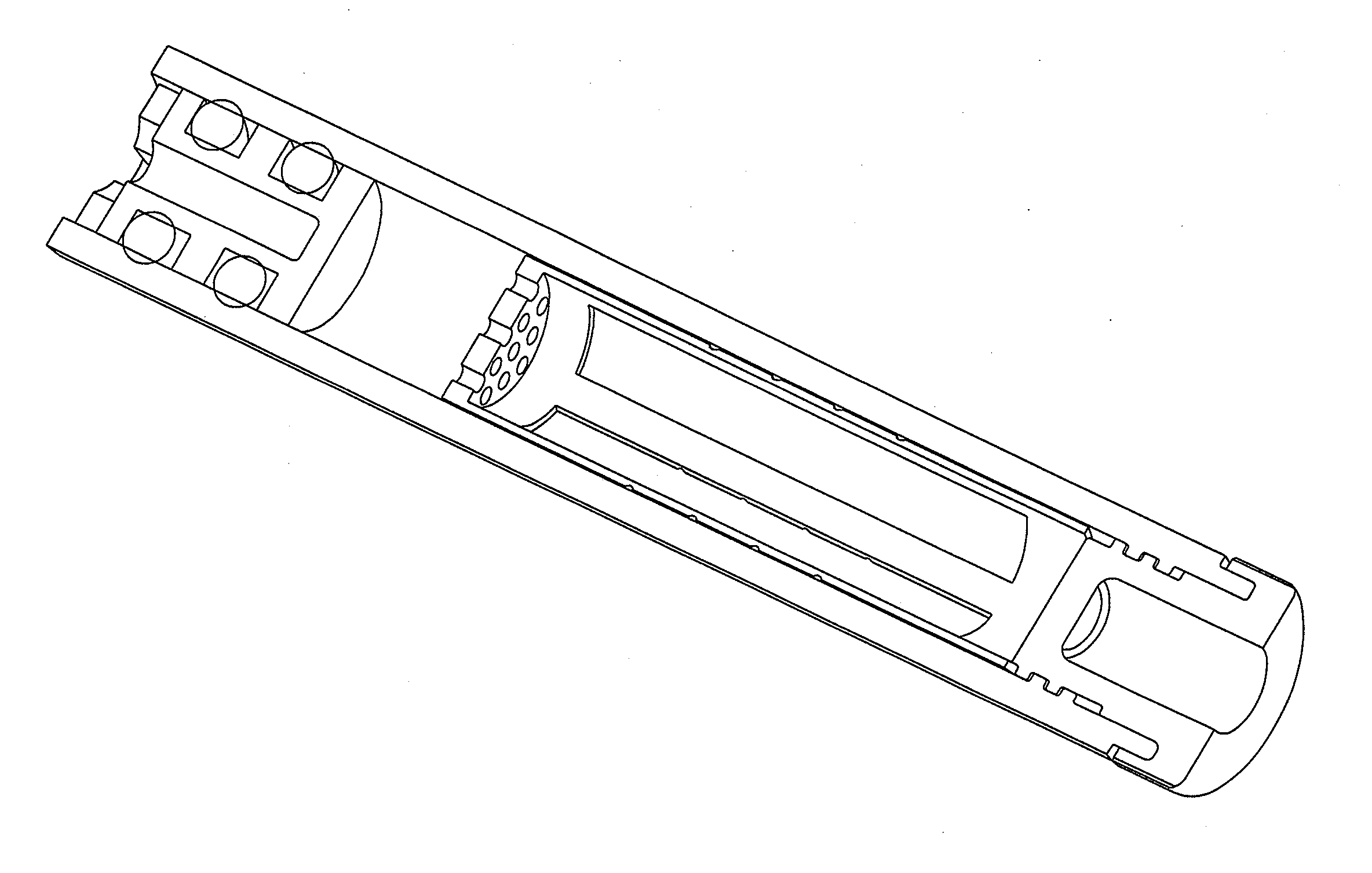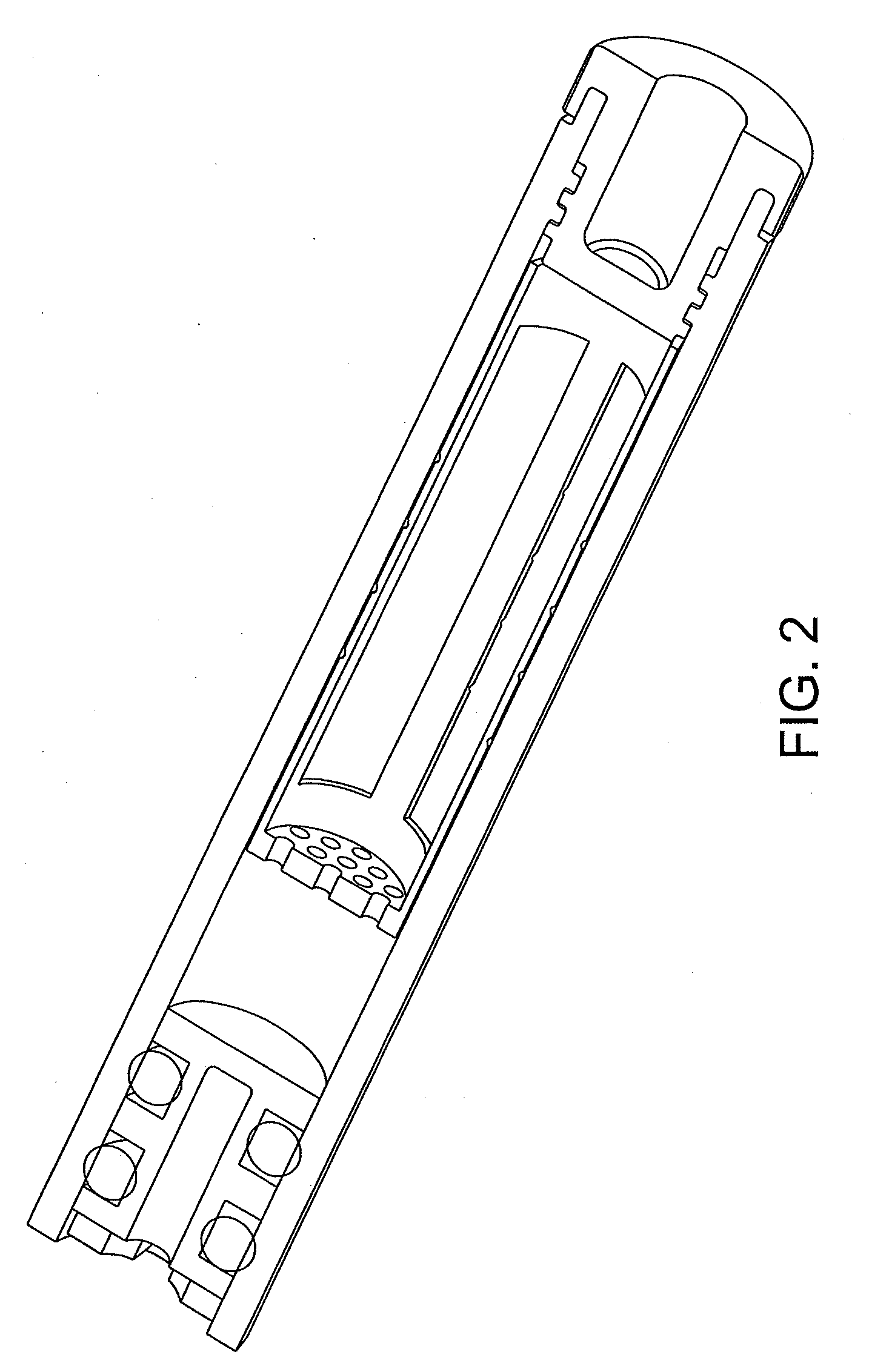Shredder for mechanical disruption by gentle controlled compressive rotation
a compression rotation and mechanical disruption technology, applied in the field of shredders, can solve the problems of difficult extraction of biological samples, insufficient to break a tough external structure quickly, and difficult samples to extra
- Summary
- Abstract
- Description
- Claims
- Application Information
AI Technical Summary
Benefits of technology
Problems solved by technology
Method used
Image
Examples
example 1
Comparison of Shredder of the Present Invention and BIOMASHER™ (from Nippi, Inc.) in Extracting Protein from Pine Needles with a Physiological Buffer or ProteoSOLVE™ IEF Reagent
[0058]Pine needles were coarsely cut to about 4-5 mm lengths within one hour of harvesting. Either 50 or 200 mg was weighed into tared PULSE Tubes or BioMasher™ inserts. Samples were processed in duplicate, either in KPO4 buffer or the ProteoSOLVE IEF Reagent with 100 mM DTT.
[0059]As illustrated in FIG. 6, for the BioMasher™ centrifugal method, the assemblies were centrifuged at 14,000 for 20 seconds with homogenizer bar positioned according to the manufacturer's instructions. BioMasher™ inserts were 80-140 μm pore size. The inserts were washed twice, each time with 700 μL followed by centrifugation. Initial homogenates and washes were pooled. Final sample volume was 1400 μL. For the Biomasher™ rotational grinding method, the homogenizer bar was connected to a standard power drill according to the manufacture...
example 2
Increased Protein Yields from Coniferous Plants Using the PCT Shredder™ and Pressure Cycling Technology (PCT)
[0068]The plant proteome provides the opportunity to monitor post-translational response to environmental influences such as pollution, insect infestation, or plant diseases. Comprehensive proteomic analyses require reliable extraction methods that isolate proteins reproducibly and without bias. Sample preparation of plant tissues is particularly challenging due to the nature of cell walls, which make it difficult to quantitatively extract analytes, the relatively low cellular content of proteins in some plant tissues, or the abundance of lignin, tannin, and other polyphenols that can interfere with protein analyses. The extraction of proteins from pine needles and other coniferous tissues is particularly challenging, and may be further complicated in these species by their high content of terpene resins. Here a system for the efficient extraction of proteins from two conifer...
example 3
Tick Borrelia and HGE Gene Expression Analysis on DNA Preps Isolated Using Shredder with PCT: Standard Curve and Total Bacteria Lyses
[0083]Basic Methodology for tick DNA extraction involved the following steps.
[0084]The tick samples were soaked in Tris buffer for 1 hour before PCT. One tick was loaded into the ram end and shredded by hand, followed by PCT treatment for 60 cycles at 56 C in protease K. The tubes were placed in boiling water and boiled for 10 min then unloaded. CTAB buffer was added up to final concentration of 2% and allowed to incubate at 65 C for 20 min. Phenol-chloroform purification was performed. The final volume of 100 ul was saved at −20 C.
[0085]Real-time PCR were performed. Two standard curves were designed for relative quantitation of Borrelia and total bacteria DNA. Doing so, Borrelia DNA and E. coli DNA from ATCC was series diluted. Borrelia 23S rRNA gene and bacterial 16SrDBA gene were amplified.
[0086]An XY plot with the log DNA input amount vs. Ct for gr...
PUM
| Property | Measurement | Unit |
|---|---|---|
| lengths | aaaaa | aaaaa |
| pore size | aaaaa | aaaaa |
| volume | aaaaa | aaaaa |
Abstract
Description
Claims
Application Information
 Login to View More
Login to View More - R&D
- Intellectual Property
- Life Sciences
- Materials
- Tech Scout
- Unparalleled Data Quality
- Higher Quality Content
- 60% Fewer Hallucinations
Browse by: Latest US Patents, China's latest patents, Technical Efficacy Thesaurus, Application Domain, Technology Topic, Popular Technical Reports.
© 2025 PatSnap. All rights reserved.Legal|Privacy policy|Modern Slavery Act Transparency Statement|Sitemap|About US| Contact US: help@patsnap.com



